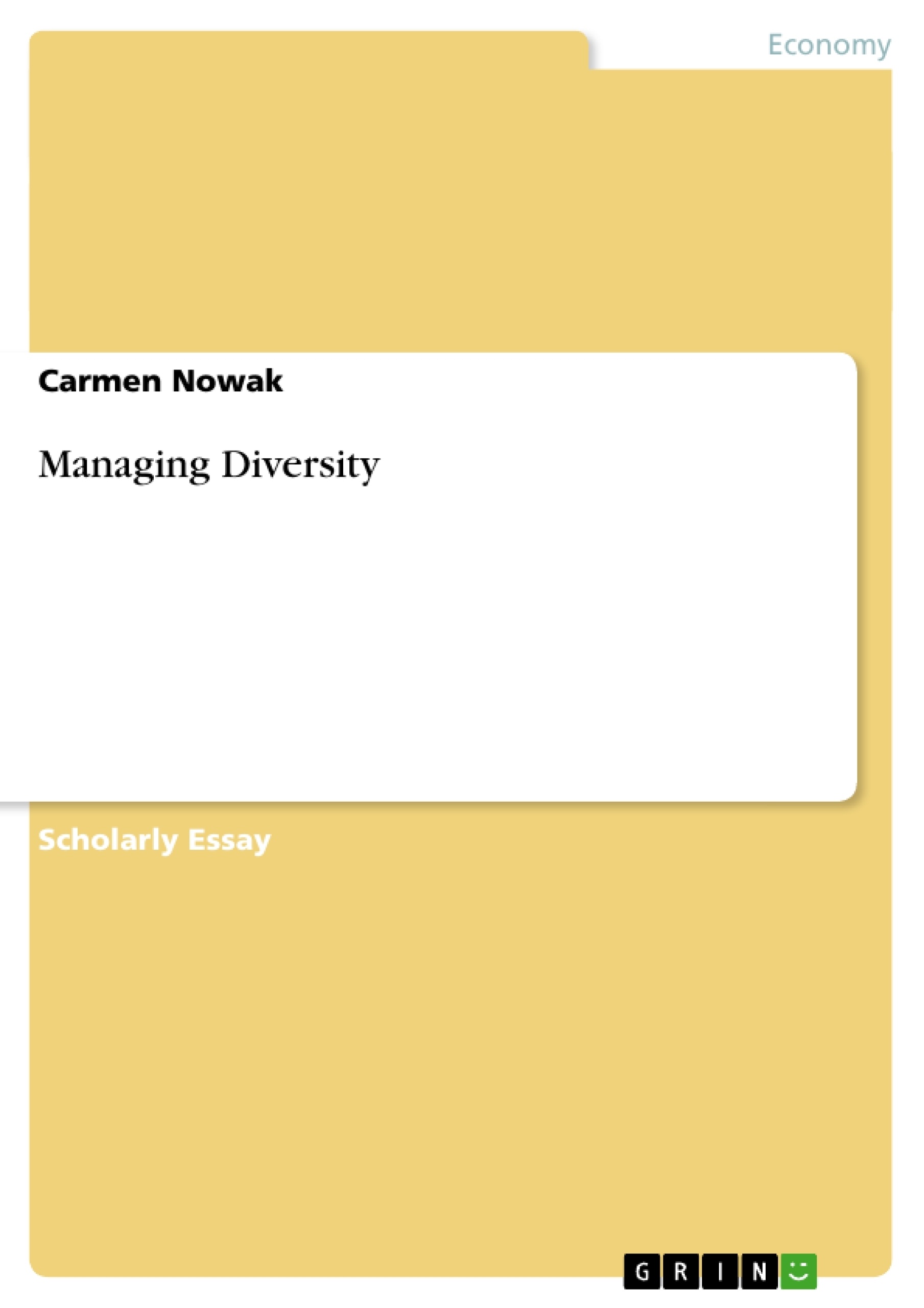Leseprobe
List of Tables
Table 1: Chances of Diversity
Table 2: Possible obstacles of diversity
Table 3: Example for Figure Development
List of Figures
Figure 1: The impact of diversity initiatives on business
Figure 2: Perceived benefits of Diversity
Figure 3: Model for Diversity Management
Figure 4: Perspectives of the Diversity Scorecard
Managing Diversity
"If we cannot end now our differences, at least we can help make the world safe for diversity." (John F. Kennedy)
Diversity - a word that is getting more and more important in today's life. Diversity has always been on earth because people can differ in many ways: gender, age, culture, sexuality or disability and many more.
There is no explicit definition about what diversity is. But it is about differences and similarities. About visible and invisible differences. It encompasses acceptance and respect that each individual is unique. It is the exploration of these differences in a safe, positive and nurturing environment. It is about moving beyond simple tolerance to embracing and celebrating the rich dimensions of diversity contained within each individual. Diversity is not about removing prejudices, but about recognizing that they exist (Aretz & Hansen, 2002, p. 15).
Since issues like alteration, climate change, urbanization and globalization are changing the world every day the world now faces the topic diversity more than ever. The importance of diversity has grown since companies have recognized that diversity can bring a benefit to the company. However, how to manage this diversity became a new problem in today's business life.
"It is not enough to get people from different cultures with different ages and genders together it is essential how these people get along with each other and with others, like employees and customers." (Daniel Goeudevert, 20021 )
Goeudevert's quote shows that managing diversity is more than just mixing diverse people together. The key point is to manage this diversity in the right way to get a benefit out of it.
„ The basic concept of managing diversity accepts that the workforce consists of a diverse population of people. The diversity consists of visible and non-visible differences which will include factors such as sex, age, background, race, disability, personality and work style. It is founded on the premiss that harnessing these differences will create a productive environment in which everybody feels valued, where their talents are being fully utilized and in which organizational goals are met.'' (Kandola & Fullerton, 1998, p. 8 )
Apart from Kandola and Fullerton there were a lot of definitions of Managing Diversity produced in the last decades. These definitions differ in some ways, but the key point is the same:
All authors see a great potential for business in diversity. Therefore differences must be managed effectively. As a result they can add value to an organization.
Kandola & Fullerton for example emphasize that each individual has potential and talent - in different ways. The aim is to maximize these potentials and talents to make a contribution to the organization. If people are enabled and allowed to work at their full-potential - no matter how different they are - a more inviting workplace is generated. The workforce feels more comfortable with the organization and is happy with their job. Moreover it is not necessary to force the people to get better. It lies in the nature of human beings to get better. The happier people feel with their job the higher is their engagement and their output. Unsatisfied people tend to stay at home and therefore cause costs for the organization. In addition unhappy people normally leave the company and new costly recruitment is then needed.
illustration not visible in this excerpt
Table 1: Chances of Diversity, Source: Aretz & Hansen, 2002
The huge demographic change in the last years led to an ageing population where less young people enter the labor market. This causes a serious shortage in the recruitment pools of the organizations which is a reason for a business case for diversity management. New working groups have to be developed. Targeting groups that have not been in this recruitment pool seems a good solution. Moreover this leads to diversity in the workforce from which the organization can benefit (European-Commission, 2005).
A diverse workforce can as well develop great ideas and plans for the organization. Creativity is a result of different ideas and viewpoints that bang together to get the maximum benefit out of it. Great ideas are needed to bring the organization forward and therefore the business case is the basis for a good start.
Nowadays there is a huge diversity in European citizens and therefore a change in customer tastes, needs and lifestyle. Having employees from diverse backgrounds can help to provide solutions and services to customers from diverse backgrounds, especially when the company is operating international (European-Commission, 2005).
Moreover a diverse workforce with a different thinking can rise to a broader and more creative portfolio of new product opportunities (European-Commission, 2005).
illustration not visible in this excerpt
Figure 1: The impact of diversity initiatives on business, Source: European-Commission, 2005
[...]
1 French litterateur, car manager and management consultant
- Arbeit zitieren
- Carmen Nowak (Autor:in), 2009, Managing Diversity, München, GRIN Verlag, https://www.grin.com/document/146779
Kostenlos Autor werden






















Kommentare